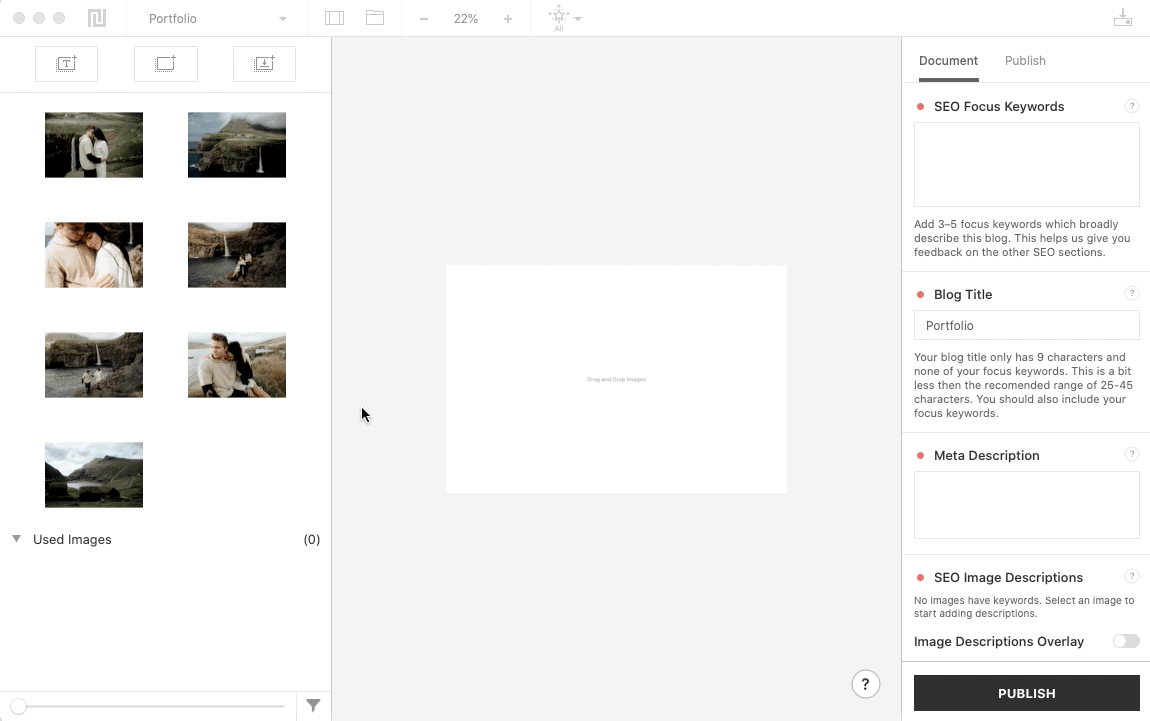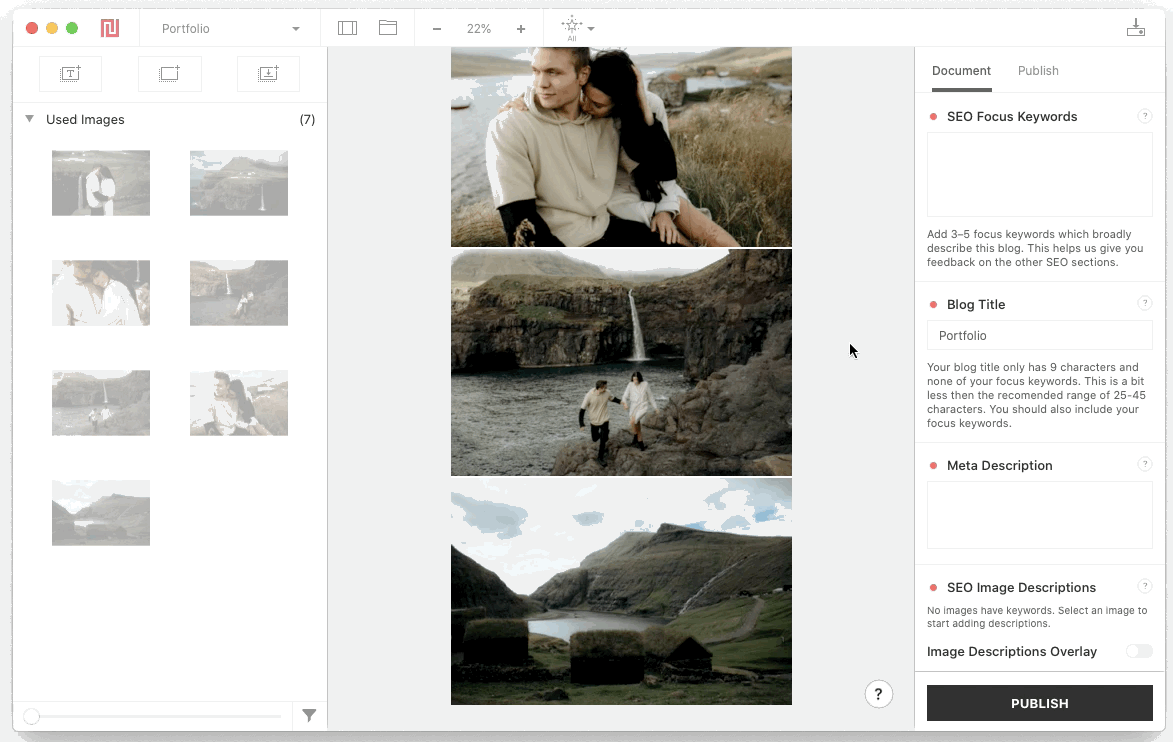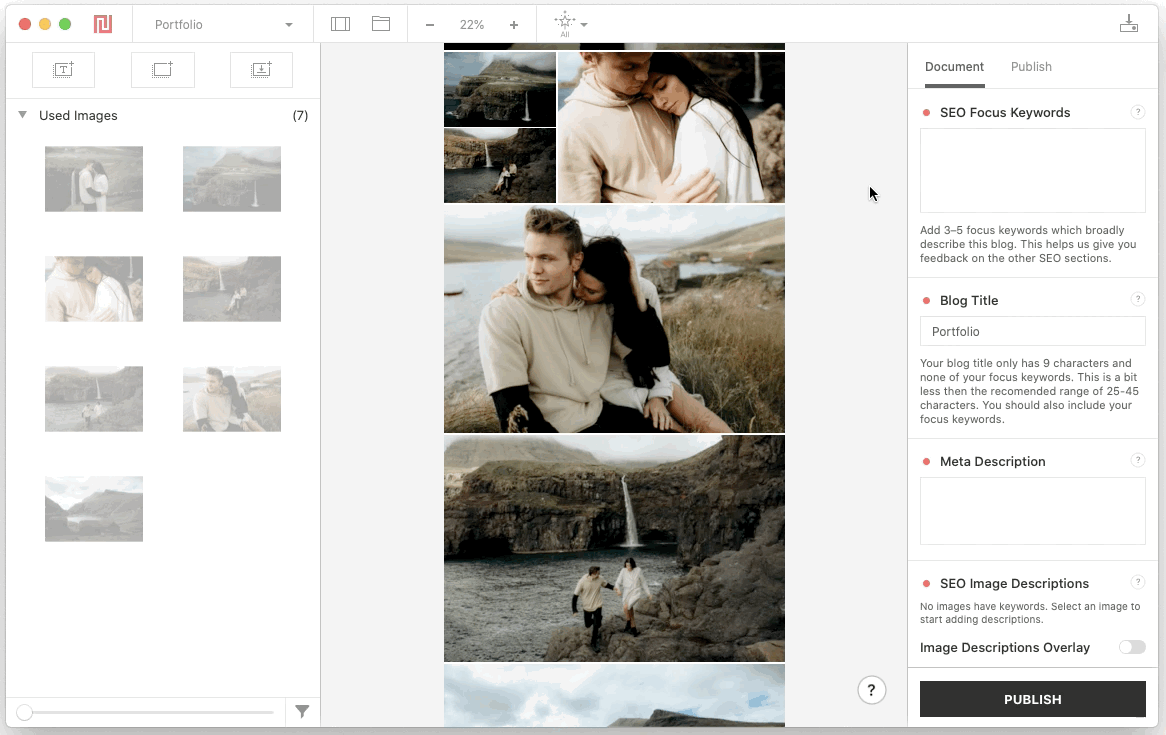Narrative vs Lightroom Classic: What’s the Best Culling and Editing tool for Professional Photographers?
Blog
By Kyle Wilson
You’ve heard you should use SEO for your photography website but don’t know where to begin. What does SEO mean, and why does it matter? What are easy, quick ways to implement SEO for photographers? After all, you want to be out shooting, not sitting behind a computer any more than you already do.
Here’s just what you need to know, and no more.
(If you can’t be bothered learning any of this, just use Narrative Publish. It guides you to create SEO-friendly blog posts in minutes. We’re making things simple for photographers because we know you have better things to do.)
SEO stands for ‘Search Engine Optimization.’ It’s what makes your website appealing to search engines.
“Optimizing for SEO” is a fancy way of saying ‘make Google notice your website.’
You want Google to notice your website because:
We all want to appear on the coveted first page of search results. Google determines your search results rank based on elements including text, title, image descriptions, links, and your site’s reputation.
Let’s break down how to easily optimize your SEO to enhance your website ranking, resulting in more clicks—and more clients.
Keywords are the words or phrases people type into Google. When you Google ‘best Chicago-style pizza near me,’ those are keywords.
Put yourself in your client’s shoes. First, what are they searching for? Second, what makes your photography different so they want to click on your website?
Say you're a wedding photographer based in Cancun. Your clients would likely be searching for "wedding photographer Cancun." Now add in what makes you different, such as "black and white wedding photographer Cancun" or "award-winning wedding photographer Cancun." Substitute whatever you market yourself as: affordable, luxury, vintage, etc.
You can do keyword research to identify what searches are popular. Use basic tools like Google Trends to get an idea and find inspiration for keywords, or go deeper into keyword research with tools like Semrush.
Use keywords throughout the copy on your site - on your homepage, About page, and within your blog posts. Don’t use keywords so often that it doesn’t read well, as Google finds that spammy and will decrease your ranking. Prioritize your reader’s experience first and sprinkle in some keywords naturally.
For each blog article, use keywords that fit the context, like the location of the shoot.
💡Narrative Publish will suggest feedback on your keywords; use 3-5 to give the clearest idea of what the blog is about.

The title of your website or blog article is the blue text that appears in search results. The meta description is the two lines of black text beneath it that describe the webpage.
You need to optimize for humans and bots. This is so your audience understands what the page is about (and wants to click to read more) and tells Google what the website is about.
Your title has to catch the user’s interest AND rank for a keyword.
The meta description needs to be a brief, accurate, and enticing explanation of what the page is about.
Google does not use meta descriptions to calculate ranking; however, they act as advertisements for your page's content and affect click-through rates, which in turn affect your ranking.
💡Narrative Publish automatically suggests limits of 45 characters for the title and 125 for the meta description.
As a photographer, sharing your images is the whole reason you post to your site, but search engines can’t “see” your images. You have to describe your image and optimize the size to keep the Google bots happy.
Image descriptions, or “alt text,” are where you describe what’s in your image.
Accurate descriptions give Google more context about your page and can significantly affect your ranking. It’s also another opportunity to add keywords to your page.
To write a good image description, imagine describing it to someone who can’t see it. What details would you give them?
Example: “couple hugging” vs “couple hugging on beach by Pacific Ocean” - the first description is vague, while the second paints a picture.
💡Narrative Publish uses your image description as the image title and to create your alt tags.
There is a lot to know about image size to give the best user experience and to satisfy the SEO bots - no one waits around for slow pages to load - but we’ve made it so you don’t have to worry about it.
💡Narrative Publish automatically resizes your images so the appropriate size is displayed no matter what screen it's viewed on. So, if someone views your image from their iPhone (with a screen size of 500 pixels wide), Narrative will deliver the image that is 500 pixels wide. Your images always look their best and load at speed.

Blogs are essential for SEO. Using keywords and links will help your rank while keeping your site updated regularly with fresh content for your audience.
Readable blogs are more attractive to users and will keep them on your site longer, which helps your ranking.
Google understands grammar, so if your chosen keywords are “portrait photographer Chicago” it will recognize “portrait photographer in Chicago” as the same thing.
Don’t forget about your About page, Homepage, and any other page of your site - good copy will help your SEO. Check out our pro tips on writing content for photography to enhance your writing skills.

A backlink is when another website links to your site.
Google sees someone else linking to your content as evidence that your website is legit. More links = more traffic, and Google loves to see traffic.
While you can’t force people to link to you, you can encourage backlinks:
Outbound links are where you link to other sites from your website. Google likes to see you link to high-quality, relevant websites; it tracks how many people click your links.
Linking to other sites is critical for SEO to:
Implementing SEO practices on your photography website can enhance your search results ranking, making you more visible to potential clients. And you can start without spending any money.
Mastering SEO is a complex matter, but the Narrative team has simplified it for you.
Narrative Publish revolutionizes the blogging process, making it simple to deliver beautiful, image-heavy, SEO-friendly blog posts in minutes.
Don't let the complexities of SEO hold you back—unlock the potential with Narrative Publish.